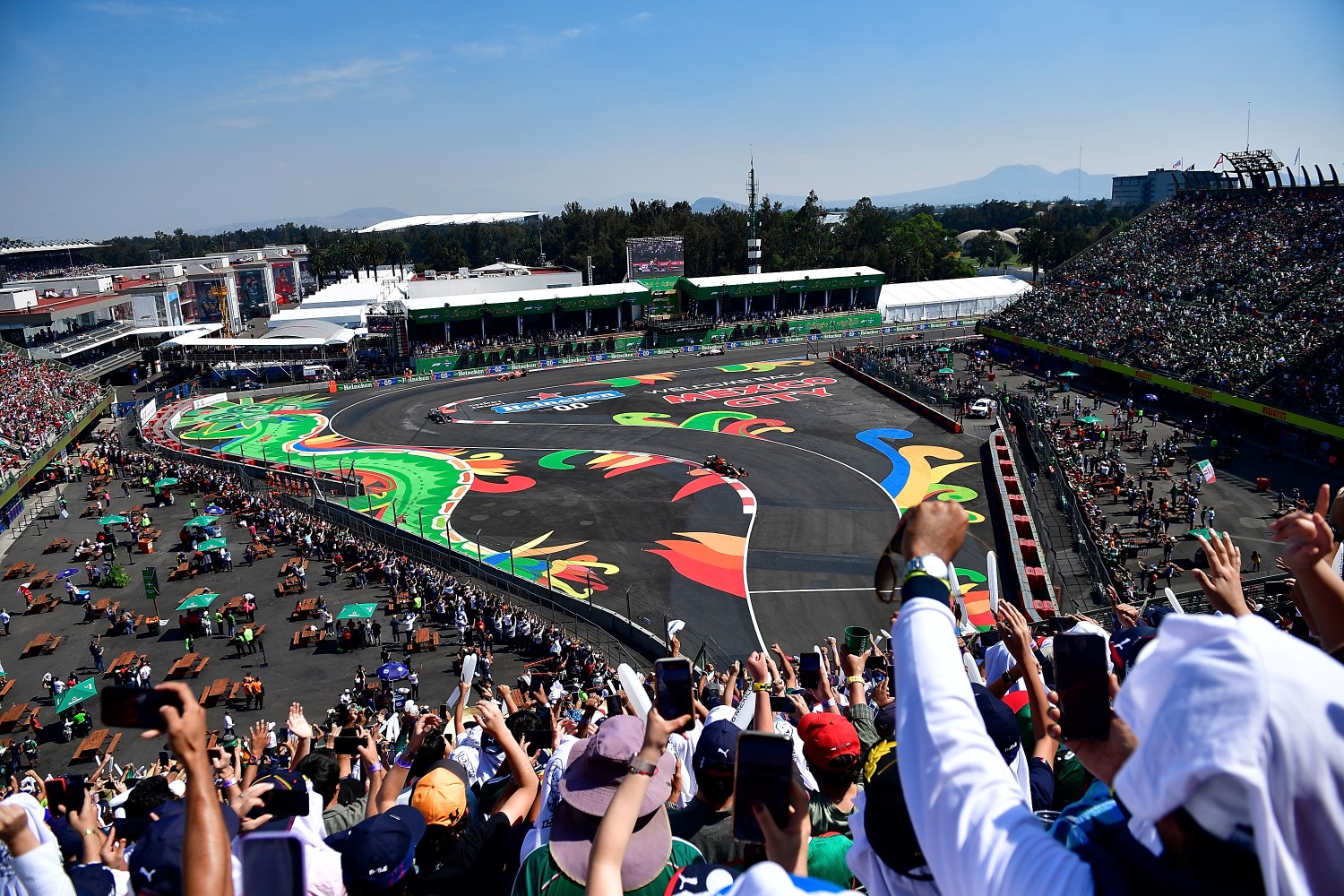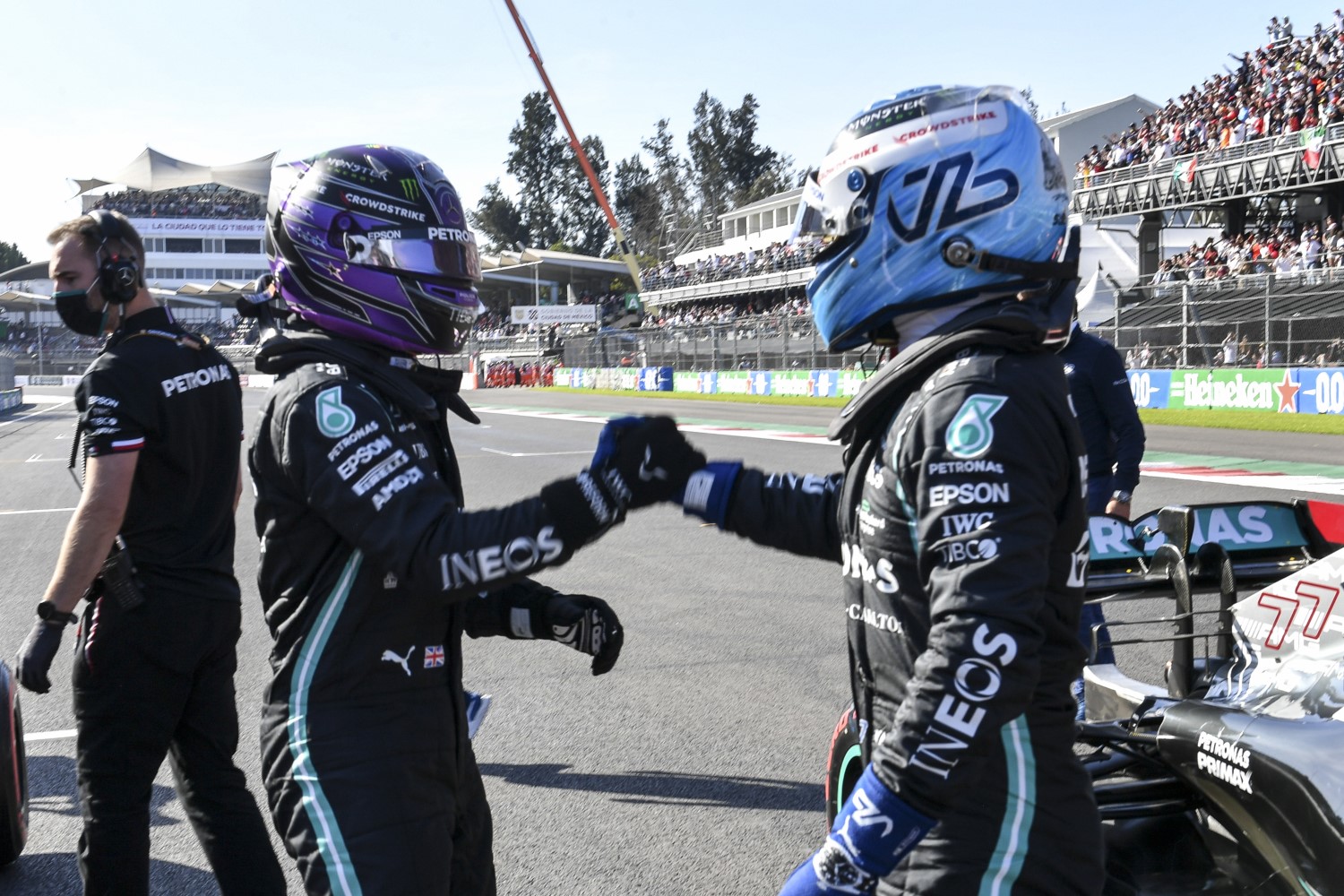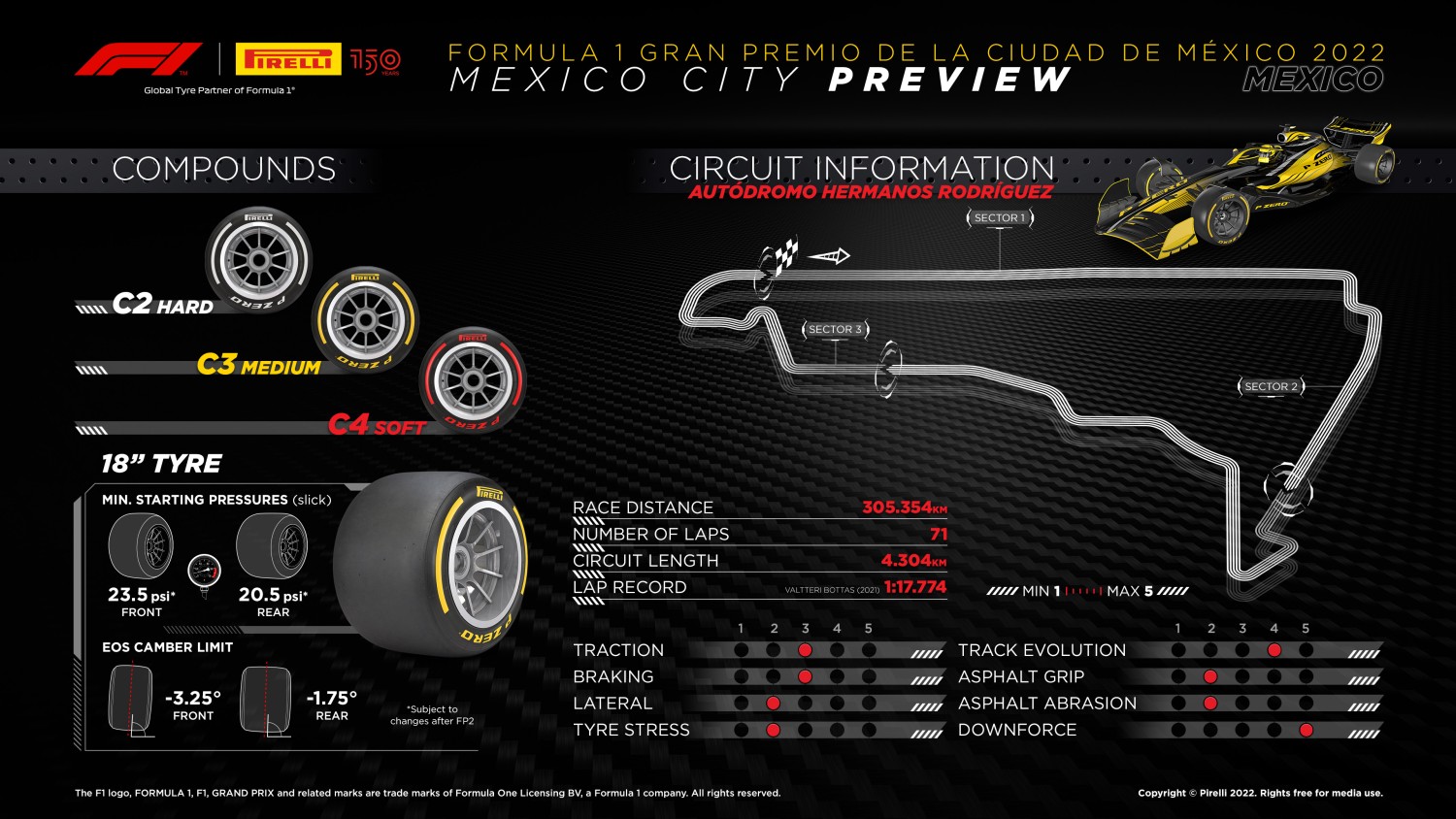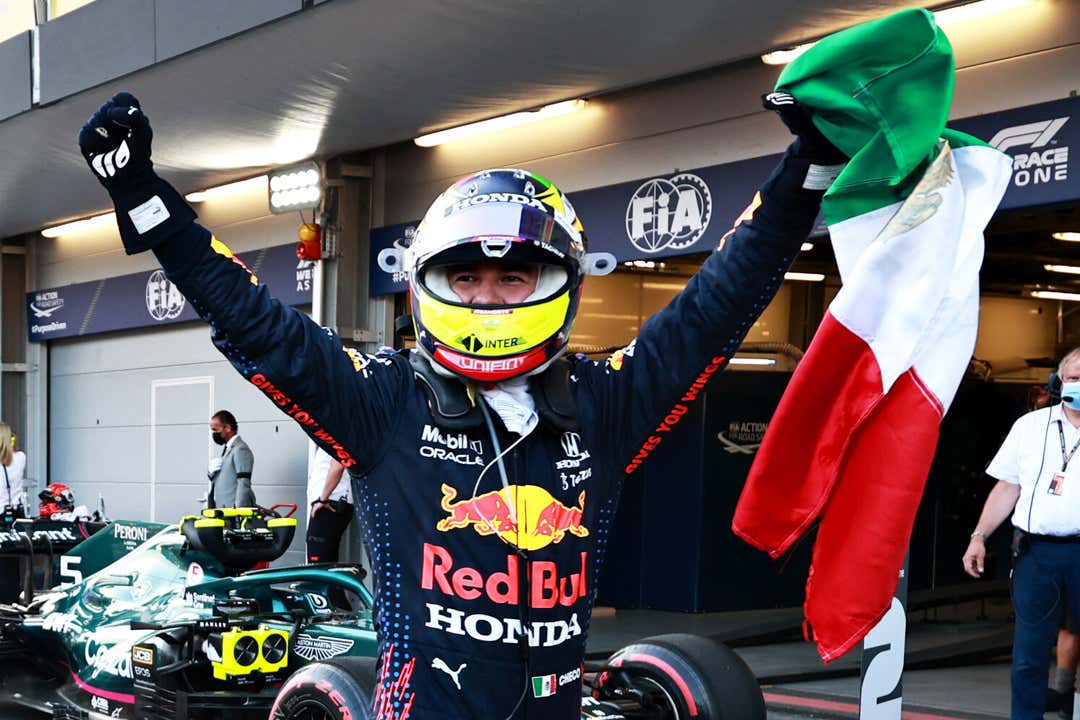F1: Mexico City GP Preview
After the USGP in Austin, Texas last weekend, the F1 teams headed south from the United States to Mexico for Round 20 of the 2022 FIA Formula 1 World Championship, the Mexico City Grand Prix.
The Autódromo Magdalena Mixhuca first played host to Formula 1 in the 1960s, with the venue – located in the eastern districts of the sprawling Mexico City – subsequently renamed in honor of Mexico’s famous racing brothers Pedro and Ricardo Rodriguez. The Autódromo Hermanos Rodríguez has had three stints on Formula 1’s calendar and its most recent spell began in 2015, when it made a popular return to the schedule.

The Autódromo Hermanos Rodríguez provides unique challenges to Formula 1 teams due to its high altitude. The circuit is located over 2,200 meters above sea level – and over a kilometer higher than the second-highest venue – which influences the power units and Formula 1’s capricious aerodynamics. Straight-line speed is often very high due to the lower drag, though the impact of DRS is consequently reduced, which can hinder overtaking.
The thinner air also means cars generate less downforce, which can lead to slippery machines through the esses that comprise the middle sector of the lap, while getting tires and brakes into the optimum window can be an additional challenge due to the altitude. The circuit’s showpiece is the imposing Foro Sol stadium, through which the final sector of the lap passes, creating a frenzied atmosphere across the course of the weekend.

It’s a challenge – both physically and technically with the car – cooling is an issue. You don’t have as much downforce, you run a lot of wing on the car, and it’s very low density in the air, so you actually have about the same amount of downforce as you have in Monza. That’s why we’ve seen some of the highest top speeds from Formula 1 cars there. It’s tough physically and in the past, drivers have had Altitude Sickness from being so high up.
This week’s Mexico City Grand Prix sees Pietro Fittipaldi return behind the wheel to drive the Haas VF-22 in FP1 as part of the mandatory ‘rookie’ allowance for each team.
American Logan Sargeant will again be back behind the wheel of the Williams in FP1.
Nyck de Vries will be replacing George Russell in FP1 this weekend as part of the Mercedes team young driver session allocation.
Like in Austin, the race drivers will be completing tire testing for Pirelli during FP2.

Fact File: Mexico City Grand Prix
- The Autódromo Hermanos Rodríguez is the third-shortest circuit on the 2022 F1 calendar, at just 4.304 km (behind only Zandvoort and Monaco). However, it has the longest run from pole position to the first braking zone and almost 10 seconds of the 811-metre straight are taken at full throttle.
- Safety Cars: The appearance of a Virtual Safety Car is twice as likely as a full Safety Car. It isn’t a particularly long pitlane delta time, so it can be possible to make a ‘cheap’ pit-stop in the event of an interruption during the race. The retirement rate is also below the norm – just three DNFs on average.
- Overtaking: Harder than it appears. The effect of the slipstream is lower than at other tracks, due to there being less air to punch through. This also makes DRS less effective. Regardless, there are three zones, and the majority of the overtakes (around 70 percent) happen into Turn One at the end of the long straight.
- Because of the high altitude and the low air density in Mexico City, the air is incredibly thin (meaning there are less molecules around) and transports less energy away from hot systems like the Power Unit and brakes. Therefore, cooling is a big challenge and different bodywork is required to prevent overheating.
- The ambient pressure is the lowest of the season by far. At 780mb, the oxygen levels are 78% of what they are at sea level, and this has a big impact on different areas of a Formula One car, such as Power Unit performance and downforce.
- Because you can run a Monaco wing level but experience Monza levels of downforce, top speeds in Mexico are the highest of the season, where the cars can achieve 336 km/h (or more with a tow).
- The Power Unit is one of the most affected systems on the car by the high altitude, with a decent drop in engine power due to the thin air. The turbocharger makes up for some of the power loss, but not all of it and has to work much harder than it would in normal conditions.
- Nyck de Vries will be driving the W13 in FP1 this weekend, replacing George. Teams must reserve two FP1 sessions (one per race driver) for a young driver and Nyck’s run in Mexico City will conclude our session allocations.
Unlocking the lap
Turn One may appear no different to many similar corners on the calendar, but it is a challenge. The approach-speed is one of the highest on the calendar, which makes finding a braking point tricky, and the lack of downforce due to the altitude only adds to that. Additionally, the exit needs to be compromised heavily for the chicane that immediately follows.

The Esses – Turns Seven through to 11 – is where the cars will usually rely the most on the downforce. With aero grip drastically reduced – despite teams running very high levels of wing – it makes this sequence of fast bends all the trickier. Turn 10 in particular is tough and it is easy to lose stability through this corner.
Concluding the lap are Turns 16 and 17. The sharper of the two right-handers – named after Nigel Mansell – is crucial to the lap, while also setting up the next one for the very long pit straight that follows. The last corner, while still called Peraltada, is a shadow of its former self but requires a tricky balancing act on the throttle to maximize acceleration on to the main straight.
Weekend Weather
Temperatures should be comfortable all weekend, but there is a 20% chance of showers on Friday and a 40% chance on Saturday and Sunday, so weather could be a factor at some point.
Pirelli Tires – Mario Isola – Motorsport Director
Mexico is a completely different challenge to the two races that came before it”
“Over the course of a season, our tires have to cope with a wide variety of conditions depending on the individual characteristics of each venue. If you look back at the last two races, Suzuka was all about lateral forces and Austin was well-balanced aerodynamically, but Mexico this weekend focuses on traction and braking. The Hermanos Rodriguez circuit does not offer a lot of grip and the energy demands on the tires are reasonably low, as the cars do not generate much downforce in the thin air at high altitude, especially in slow corners. This year, the circuit might be more front-limited, as the current generation of car tends to understeer through slow corners – which Mexico has plenty of – and this can lead to some sliding on the front tires. Due to the nature of the venue the circuit tends to feature a dusty surface with plenty of track evolution. Understanding this and getting the tire warm-up exactly right is likely to be the key to success.”

Key Quotes
Max Verstappen
“I’m looking forward to going back to Mexico, I love the food there, especially the tacos! We’ve always seemed to do quite well as a team in Mexico. It was of course incredible to win there last year, and we are hoping for very much the same performance this year. It’s always good to see all the Red Bull fans in the grandstands, they are so passionate and there’s always a lot of support for Checo which is great to see. We’ve secured the Constructors’ and Drivers’ Championships but we are still here to win, we will keep pushing and do everything we can to remain competitive for the rest of the season.”
Local Hero Sergio Perez
“To come home after winning the Constructors title on Sunday makes this week feel bigger and more exciting than ever. Things in our sport happen so fast, as soon as Sunday was over, we were already focussing on trying to win this weekend. But it has already been such a special week for me taking the Red Bull Show run to my hometown, it’s a memory that will live with me forever. I don’t want to stop there with creating moments this week though, my aim is to win my home Grand Prix and I know I have the car and the Team to do it. It has been an incredible season for the whole Team and, I will give one hundred percent to win for these fans in Mexico”
Will Verstappen gift the win to Perez?
Sergio Perez is locked in an intense fight for second-place in the drivers’ championship, trailing Charles Leclerc by just two points with three rounds remaining.
While Red Bull have already secured the drivers’ and constructors’ crowns, they will still be wanting Perez to finish second behind Max Verstappen – something they never managed in the days of Sebastian Vettel and Mark Webber.
The F1 Mexico City Grand Prix is Perez’s home race, and a first-ever victory in front of his adoring fans would be something special to see.

What is Downforce and Why is it So Important in F1?
Mexico is a unique venue for F1 with the high altitude impacting how the cars perform on the track, particularly related to the aerodynamics and downforce. Our latest preview feature talks through the importance of downforce in F1, featuring interviews with Mike Elliott (Technical Director), Claire Simpson (Aerodynamics Group Leader), Kathryn Richards (Wind Tunnel Technician) and George Russell (Driver of Car No.63).
Downforce is an integral ingredient to making a Formula One car go fast out on track, but why is this the case? How do we decide the correct amounts of downforce required and what external factors influence it? Keep reading to find out.
What is downforce?
Downforce is the vertical component of the aerodynamic forces acting on the car. As the car travels through the air, the downforce will push the car down into the ground. In terms of the aerodynamics of the car there are actually three forces: the downforce is the vertical force, the drag is longitudinal, and the side forces are lateral, with three moments operated around these axes.
Downforce is undoubtedly the most important in terms of car performance, as the more we can push the car down into the ground, the faster we go around the corners and the better the car handles. When downforce levels change, drivers can really feel it in the car. Reducing downforce causes the car to slide around more, the rear end is less stable, but you have less drag on the straights. With higher downforce, the car feels much more planted to the ground, but on the straights it can feel like you’ve got a parachute on the back of your car.
To give some perspective on how much downforce these modern F1 cars generate, it’s fairly similar now to the old regulations. At around 150 km/h, the car generates as much downforce as it weighs (the minimum weight of the car is 795kg). By the time you reach the end of the straight where the car is travelling at its maximum speed, it is probably three or four times the weight of the car.
You would assume the faster the corner, the more important downforce is, where the aerodynamic loads are the largest. But because the cars spend so much time in the low and medium speed, that’s where the biggest time loss around the circuit is, so therefore the downforce there is actually the most important. If you can push the car into the ground more through those fiddly, slower-speed sections, the better grip and traction you’ll get on corner entries and exits.
Which parts of the car generate downforce?
The majority of the downforce generated by the car comes from the floor, but there are also big contributions from the front and rear wings. Both of these elements of the car are also easier to adjust in terms of downforce level, because you can change the front wing angle or the depth and angle of the rear wing flap, to provide different downforce levels.
However, while those are the obvious aerodynamic elements, the entire car is generating downforce. Every surface and piece that the air touches are generating some form of downforce. The trick for the aerodynamicists is to get them all working in harmony to deliver maximum car performance.
How do we develop a downforce package?
The first step to developing an aerodynamic package is to start thinking about the flow structures, so what flow structures we want to make around the car to either improve performance or target performance to a specific track’s characteristics.
We would start by using Computational Fluid Dynamics (CFD) to try and achieve these flow structures, iterating a few geometries and see what has been successful. Then if we achieve the results we’re looking for in CFD, we’ll the decide what to take for a Wind Tunnel test.
On the track, the car moves through the air and goes around the track, but in the Wind Tunnel, this is flipped, so the car is stationary, and we move the road underneath the model and pull the wind over it. This simulates the same relative motion between the car, the road and the air as you see on the track. Given how limited track testing is in modern F1, the Wind Tunnel is a vital tool.
However due to F1’s aero restrictions, the amount of CFD and Wind Tunnel time given to each team depends on where they finish in the Championship. Finishing higher up the standings gets you less time for aero testing, compared to those lower down. It’s split into two sections, your position on the 1st January (we were Champions on this date in 2022, so had the least time of everyone) and the 1st July (we were third in the standings at this time, so therefore have more time than the top two).
Once a component has been successfully tested in the Wind Tunnel, it’ll then be down to the manufacturing areas of the team to make the part and deliver it to the track.
What external factors influence downforce?
One key external influence on the aerodynamic performance of the car is the weather, particularly the wind. Aero is very sensitive so changes in wind direction or speed can impact the way a car handles.
If you go into a corner with a headwind, you are approaching the corner slower but have more downforce as the wind is pushing the car more into the ground, so can corner faster. On the flipside, a tailwind will push you towards the corner faster, but have less downforce so the car will feel lighter as there is less wind pushing the car downwards.
Another important factor is the altitude, as this impacts the air density and the amount of air particles. In a location like Mexico, the altitude is very high, so there is a low air density, meaning fewer air particles to push the car down to the ground. So in Mexico you can run your maximum downforce wing used in Monaco or Budapest, but it’ll produce downforce levels similar to Monza, and the highest maximum speeds of the season.
The car will therefore perform slightly different in Mexico and the drivers will feel this in the cockpit. It’s also a challenge for car cooling because there is less air passing through the radiators and cooling vents, to lower the temperatures of key systems like the Power Unit and brakes. So extra cooling provisions are typically brought to Mexico.